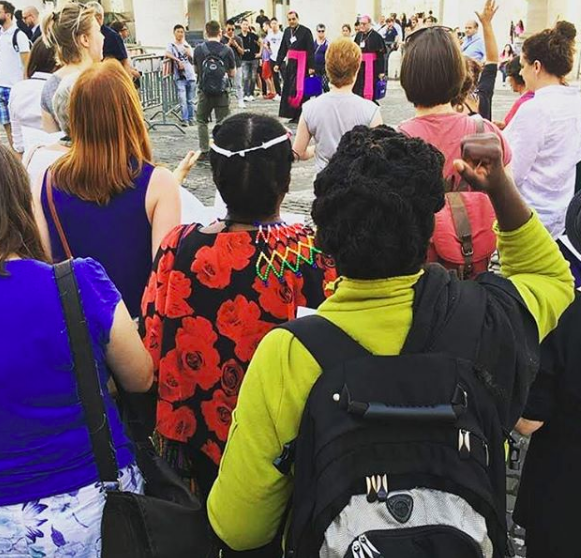Women’s Anger
Rebecca Traister has a new book that could describe us perfectly: Good and Mad: The Revolutionary Power of Women’s Anger. We are good. Are we mad?
Traister spoke this evening – Thursday – at the Free Library of Philadelphia, and I encourage you to go hear her on the book tour. I hope she has the same energy at the end, but who knows what momentous event will be happening then? Tonight we are all wondering what will happen tomorrow at the Judiciary Committee – at the same time we fear it.
Women’s anger, Traister argues, is treated very differently from men’s in the public sphere. The central question of her book, she says, is whether “white women can be persuaded to become engaged against the power abuses of the white patriarchy.” Certainly that can be our question. We face one of the oldest patriarchies in the world, and for now, most of us as well as most of them are white. Traister is especially articulate about how black women’s anger is perceived.
For years I taught the history of women’s – and men’s – efforts to change their societies. What Traister adds to this story is anger as a motivation. Anger is different from justice as a motivation, or ending suffering, saving the earth, or other framings of activism. Question: why are you doing this? Answer: Anger. In Traister’s universe, rage allows people to discover each other and form a movement.
Yet anger scares me. I generally regret my own sudden outbursts. I become concerned about the anger of my friends and colleagues and wonder if my blog contributes to their deep pain about the church and about America today.
Earlier today I watch what’s going on this week in Rome. I am so proud of the women in this video: Kate McElwee and Sheila Pfeiffer of WOC and many others we met at Women’s Ordination Worldwide. You can hear the British accents in the chants! Who’s angry in this picture? It’s classic passive resistance: causing arrest to call attention to a cause. I see Sheila gather the group in a huddle for support; they turn over their passports to the police, who turn them back, according to the article by Jamie Manson in NCR. Fortunately, no arrests. But my guess is that everyone who views this has an emotional response to it. We join with their anger.
 And look at the other photos in the article. Women raising fists. Bishops embracing. Police confronting. Like one of those photo books you flip through to simulate a motion picture. The whole story is here.
And look at the other photos in the article. Women raising fists. Bishops embracing. Police confronting. Like one of those photo books you flip through to simulate a motion picture. The whole story is here.
I have channeled my anger into public actions, into organizing, and into institutional change. Someone asked me last week whether I thought demonstrations had any value. Certainly in Rome there is no question that they do. Whatever you think of the church, the power to change the institution is on display there. Pope Francis’s Synod on Youth includes a few non-bishops who might observe the protestors and be strengthened in their own resolve to speak out – not to mention a few bishops who can actually vote. Share my pride that WOC is there.
Local actions, like those that are happening around the country this weekend in response to the sex abuse crisis also have a clear value and agenda: to get elements of the Time’sUp platform adopted locally. Search around the site for more information or add your name to the list to be connected with others who want to take action.
Another value to a demonstration is Traister’s point about finding each other: it means something to the demonstrators, even if nothing is changed. I have believed that for a long time, especially when there is a prayer service. The chants in the women’s marches and all the other political ones over the years have the same effect: the experience of solidarity.
The far greater effect is the publicity demonstrations attract. Why do you think the people in power endlessly critique the media? The media are the allies of the people, and people on both sides of every issue have learned how to use the news to communicate their point of view.
I am going in and out of rage about the politics this week, so maybe I am not as immune to anger as I think I am. At least the Italian police are not throwing a bone to the protestors by providing a hearing when nothing is being heard or engaging in a charade so as not to appear to be disrespecting women.
You will know what happened in Washington when you read this. By the end of October, we all will know what happened at the synod; whether young people’s voices for women have been heard.

2 Responses
Canon 1024 reduces Christ to a male sexual object. The priest acts in the person of Christ, not in the masculinity of Christ.
Summary Points for Meditation on the Ordination of Women
http://pelicanweb.org/CCC.TOB.html#SUMMARY
I’d add a prediction, based on how thing happened in Washington: patriarchy went on unchecked. Maybe women will get even madder! The Nobel Peace Prize went to two people who have been doing anti-rape activism for many years–maybe that is a good sign that at the international level, there is room for change. I hope women in the US can channel anger into votes on Nov.6!